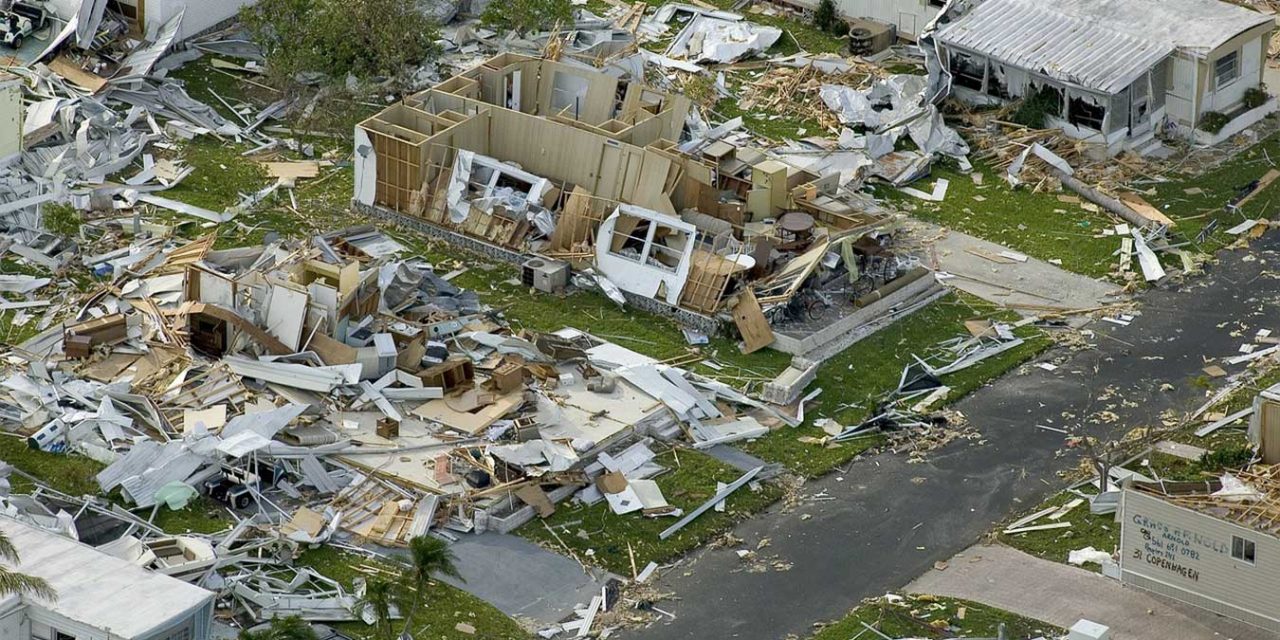
Climate Change: Increasing Storm Severity
As well as being situated in the middle of the hurricane belt, the Caribbean is particularly vulnerable to the effects of climate change because of rising sea temperatures in the region. A rise in sea temperatures leads to an increase in major storms.
On a visit to Dominica just after the category-5 storm devastated the island, the United Nations Secretary-General Antonio Guterres said that the destruction was undoubtedly the result of climate change. The Secretary-General, referring to research by the UN World Meteorological Organisation (WMO), said that natural disasters had tripled, while the damage they caused has increased five times.
“The intensity and multiplication of hurricanes in the Caribbean in this season is not an accident. It is the result of climate change,” he said.
The Secretary-General was accompanied by the Dominican Prime Minister, Roosevelt Skerrit, who has also addressed the UN in New York and told the world that the Caribbean is on “the front line of the war on climate change.”
“Our devastation is so complete that our recovery has to be total. And so, we have a unique opportunity to be an example to the world, an example of an entire nation rebounds from disaster and how an entire nation can be climate resilient for the future,” said Skerrit.
A white paper by the Nature Conservancy noted that the Caribbean “often contributes the least to climate change, yet suffers from its impact the most.”
In response, the government has set up The Climate Resilient Execution for Dominica (Cread), a task force to make the entire island hurricane proof.
One of the simplest and most effective ways to limit the damage once a hurricane hits is to replant trees along rivers and in forests as they dramatically reduce erosion and water runoff.
Roofs that have had to be rebuilt with aid from the government and international non-profit organisations have been re-engineered according to the United Nations Development Program standards, which call for screws to be used rather than nails and for steeper roof angles to better withstand high winds. Other building codes have been rewritten with help from the UK’s Department for International Development.
The Dominican government has also begun the lengthy process of burying utility cables, raising bridges and shifting to solar from generator power. The hope is that next time the small island nation is hit by a category five hurricane it will be able to bounce back in a matter of weeks not months.
Grass Roots Movements Lead the Way
As these top-down government initiatives trundle forward at their own pace, community-led efforts at climate resilience are moving much faster at the local level.
Resilient Dominica (RezDM), is a branch of the Langlois Foundation, which has been supporting science and technology on the island since it was founded in 1997, has several new projects already underway.

RezDM has set up a no-cost tool-lending program for rebuilding, a centralised vehicle depot for clearing roads and debris, a scheme in a primary school in Soufriere that stockpiles reserves of food in case of another hurricane and the installation of removable solar panels on one-tenth of homes in Soufriere.
But money is not unlimited in Dominica and it will not be climate resilient straight away. “countries that were not as a badly hit will incorporate best practices in their new buildings, but nobody is going to remove a roof that stayed on to make it stronger,” said Baron.
Despite Dominica’s ambitions to be the first climate resilient nation on earth, neighbouring islands are also implementing similar measures to combat the increased hurricane threat.
St. Barts in the French West Indies has already relayed three-quarters of its electricity grid underground and has started to build watertight doorways and wash-through channels that protect a building’s foundations in the event of flash floods.
In Puerto Rico hotels are collaborating with non-profit organisations to grow artificial coral reefs, which protect the shore in the event of future storm surges. Damage surveys have shown that reefs, as well as mangrove forests, can absorb 98% of a storm wave’s energy.]]>
- Why is California So at Risk from Wildfires? - 13th November 2019
- Carbon Offsetting is Growing but Does it Make a Difference? - 11th November 2019
- Three Confirmed Dead as Australia Prepares for “Catastrophic” Bushfires - 11th November 2019






